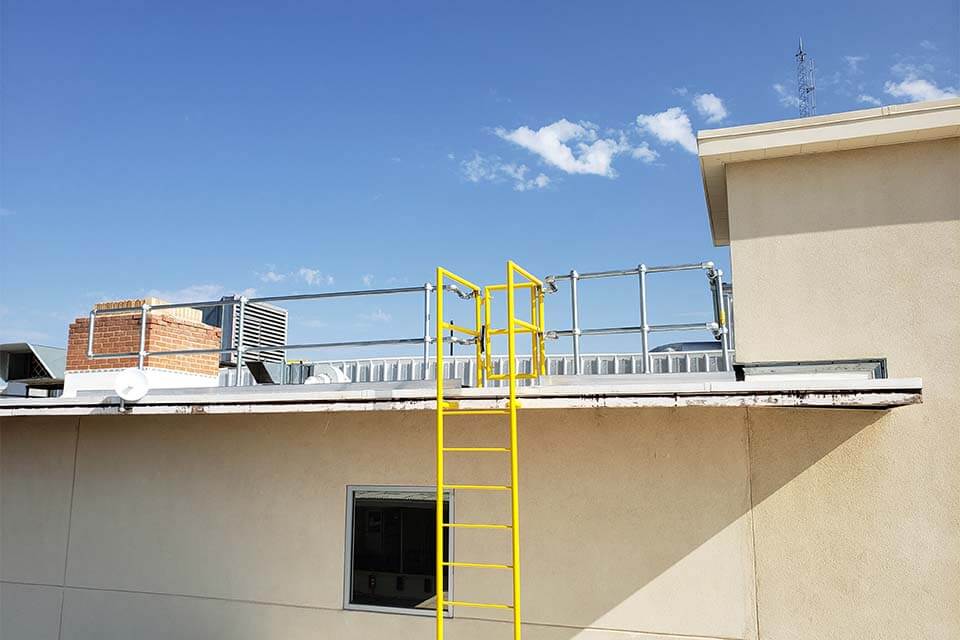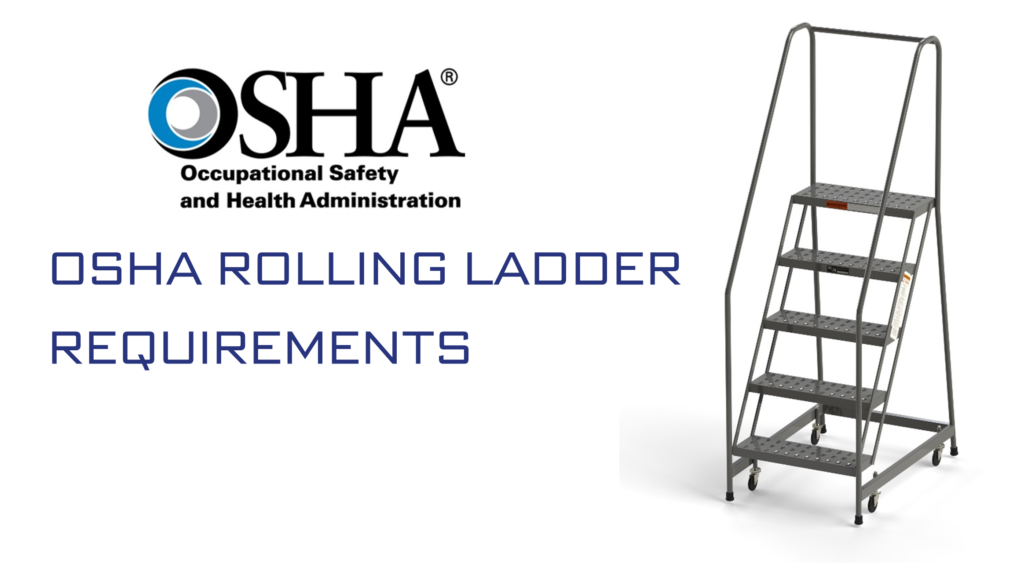Not all ladders require guardrails. OSHA has specific rules for this.
Understanding which ladders need guardrails is crucial for safety. The Occupational Safety and Health Administration (OSHA) sets these guidelines to protect workers. Guardrails can prevent falls and serious injuries. In this post, we will explore OSHA’s regulations. We’ll break down the types of ladders that need guardrails.
This information helps ensure compliance and safety. Knowing these rules can save lives and avoid fines. Stay with us to learn about the specific requirements.
Introduction To Ladder Safety
OSHA requires guardrails on ladders that extend more than 24 feet above a lower level. This ensures worker safety by preventing falls from significant heights. Proper use of guardrails reduces the risk of serious injuries.
Ladder safety is crucial for preventing workplace injuries. Understanding the rules and regulations about ladders can save lives. The Occupational Safety and Health Administration (OSHA) has specific guidelines. These guidelines help ensure workers use ladders safely.Importance Of Guardrails
Guardrails are essential for ladder safety. They prevent falls from high places. OSHA mandates guardrails for ladders over 24 feet. Without guardrails, the risk of falling increases. Guardrails provide support and stability. They are a key part of ladder safety.Common Ladder Types
Different ladders serve different purposes. Here are some common types: 1. Step Ladders: These are self-supporting ladders. They are ideal for short tasks. 2. Extension Ladders: These are non-self-supporting ladders. They are used for reaching high places. 3. Fixed Ladders: These ladders are permanently attached to a structure. They often require guardrails.| Ladder Type | Self-Supporting | Requires Guardrails |
|---|---|---|
| Step Ladder | Yes | No |
| Extension Ladder | No | Yes (over 24 feet) |
| Fixed Ladder | No | Yes |

Credit: simplifiedsafety.com
Osha Regulations
The Occupational Safety and Health Administration (OSHA) sets rules for workplace safety. These rules include guidelines for using ladders. Understanding OSHA regulations ensures safety and prevents accidents.
Key Requirements
OSHA has specific requirements for ladder safety. These include:
- Proper ladder setup and use
- Regular ladder inspections
- Training for employees
Guardrails are one critical aspect. They prevent falls and ensure worker safety.
Compliance Standards
To stay compliant, businesses must follow these standards:
- Guardrails must be used on ladders over 24 feet.
- Guardrails should be 42 inches high.
- Guardrails must support at least 200 pounds.
These standards help create a safer work environment.
| Requirement | Detail |
|---|---|
| Height | Guardrails for ladders over 24 feet |
| Height of Guardrails | 42 inches |
| Weight Support | At least 200 pounds |
Following these key requirements and compliance standards ensures worker safety. It also avoids penalties from OSHA. Keep your workplace safe by adhering to these regulations.
Types Of Ladders Requiring Guardrails
Understanding which ladders require guardrails is crucial for maintaining workplace safety. Different types of ladders have different requirements. Here, we will discuss two main types: extension ladders and fixed ladders.
Extension Ladders
Extension ladders are adjustable in length. They can extend to reach high areas. These ladders do not usually require guardrails. However, they must be used with safety precautions. Ensure the ladder is stable before use. Avoid overreaching or leaning out.
Proper placement is vital. The ladder should be set at a 75-degree angle. Follow the “four-to-one” rule: for every four feet in height, place the ladder one foot away from the wall.
Fixed Ladders
Fixed ladders are permanently attached to a structure. These ladders often require guardrails. According to OSHA guidelines, guardrails are needed if the ladder is over 24 feet high.
Guardrails must be installed on both sides. They should be strong and stable. The top rail should be 42 inches above the platform. Mid-rails must be installed halfway up.
Here is a quick reference table for fixed ladders:
| Height | Guardrail Requirement |
|---|---|
| Below 24 feet | No guardrail required |
| 24 feet and above | Guardrail required |
Using ladders safely can prevent accidents. Follow these guidelines to ensure compliance and safety.
Installation Of Guardrails
Ensuring the safety of workers is a top priority in any workplace. One important aspect is the installation of guardrails on ladders. OSHA has specific guidelines to prevent falls and injuries. In this section, we’ll cover proper techniques, common mistakes, and why proper installation is crucial.
Proper Techniques
Installing guardrails correctly is essential. Here are some key steps:
- Measure the Ladder: Ensure the ladder height is suitable for guardrails.
- Secure the Posts: Attach posts firmly to the ladder for stability.
- Check the Spacing: Guardrails should be spaced at intervals specified by OSHA.
- Use Quality Materials: Ensure all materials meet safety standards.
Following these steps helps maintain safety and compliance.
Common Mistakes
Avoid these common errors during guardrail installation:
- Incorrect Measurements: Misjudging ladder height can lead to improper installation.
- Loose Posts: Posts not securely fastened can cause instability.
- Improper Spacing: Incorrect spacing between guardrails can compromise safety.
- Using Poor Materials: Non-compliant materials may not provide adequate protection.
Being aware of these mistakes ensures a safer work environment.
Inspection And Maintenance
Proper inspection and maintenance of ladders are crucial for workplace safety. Regular checks ensure ladders remain in good condition and safe for use. This section will cover essential guidelines for routine checks and repair procedures.
Routine Checks
Regular inspections are a must for ladder safety. Follow these steps:
- Visual Inspection: Look for cracks, dents, or bends.
- Check Rungs and Steps: Ensure all steps are secure and free of damage.
- Inspect Rails: Make sure side rails are straight and not twisted.
- Hardware: Verify that all screws, bolts, and rivets are tight.
Repair Guidelines
Follow these guidelines to repair ladders:
- Minor Repairs: Tighten loose screws and replace damaged rungs.
- Major Repairs: Do not attempt major repairs. Replace the ladder.
- Professional Help: Consult a professional for complex issues.
Always follow OSHA regulations during inspections and repairs. Proper maintenance extends ladder life and ensures safety.

Credit: www.egaproducts.com
Training And Best Practices
Ensuring the safety of employees using ladders is crucial. Proper training and best practices help prevent accidents. The Occupational Safety and Health Administration (OSHA) has specific requirements. These guidelines focus on ladders with guardrails. They ensure employees use them safely and efficiently.
Employee Training
Employee training is essential for ladder safety. Proper training includes:
- Understanding OSHA regulations.
- Recognizing ladder types that need guardrails.
- Learning how to inspect ladders before use.
- Knowing how to set up ladders correctly.
Employees should also know the weight capacity of ladders. They must avoid overloading them. Training should cover safe climbing techniques. For example, always face the ladder while climbing. Additionally, use both hands to hold the ladder.
Safety Tips
Follow these safety tips to ensure proper ladder use:
| Tip | Description |
|---|---|
| Inspect Before Use | Always check the ladder for damage. |
| Set Up Properly | Make sure the ladder is stable and level. |
| Use Guardrails | Guardrails are necessary for tall ladders. |
| Maintain 3 Points of Contact | Always have two feet and one hand, or two hands and one foot on the ladder. |
These tips help prevent falls and injuries. It’s important to use ladders according to OSHA guidelines. Proper usage protects employees. It also ensures a safe working environment.
Credit: www.erectastep.com
Frequently Asked Questions
What Ladders Need Guardrails According To Osha?
OSHA requires guardrails for fixed ladders over 24 feet. It helps prevent falls.
When Are Guardrails Mandatory For Ladders?
Guardrails are mandatory for ladders exceeding 24 feet in height. It’s a safety regulation.
How High Can Ladders Be Without Guardrails?
Ladders can be up to 24 feet high without guardrails. Above that, guardrails are necessary.
Do Portable Ladders Need Guardrails?
Portable ladders do not need guardrails. Guardrails are mainly for fixed ladders over 24 feet.
Why Does Osha Require Guardrails On Ladders?
OSHA requires guardrails to prevent falls from high ladders. It ensures worker safety.
Conclusion
Guardrails on ladders ensure safety. They prevent falls and injuries. OSHA sets clear guidelines. Follow them to stay compliant. Check your ladder type. Determine if guardrails are needed. Safety is always the priority. Proper use of guardrails saves lives. Always inspect your equipment.
Stay informed and practice safety. Guardrails are a simple yet effective measure. Keep your workplace safe.
Recent Posts
Maintaining clean gutters is essential for preventing water damage to your home, and choosing the best ladder for cleaning gutters can make the job much easier and safer. With so many options on the...
Best Ladder for Cleaning Caravan Roof: Top Picks for You Every Adventure!
Today we will discuss the best ladder for cleaning caravan roof. Cleaning caravan roofs is one of the crucial tasks.After many days, a caravan roof can get dirty by debris, dirt, and grime. These can...
